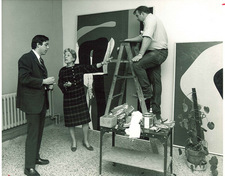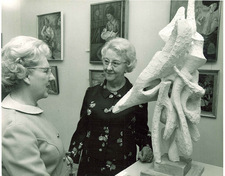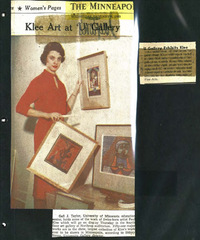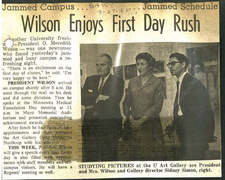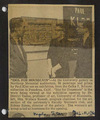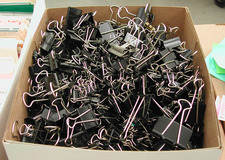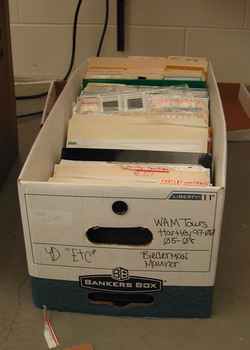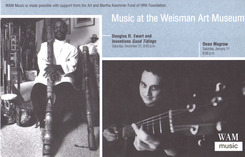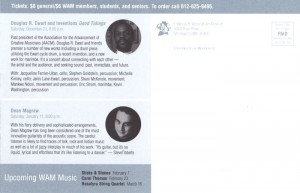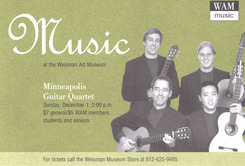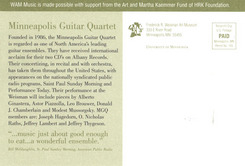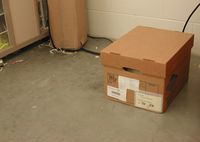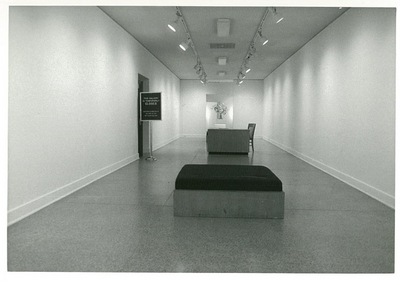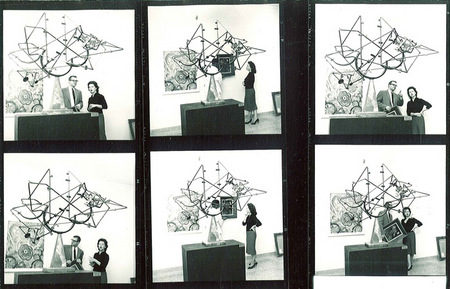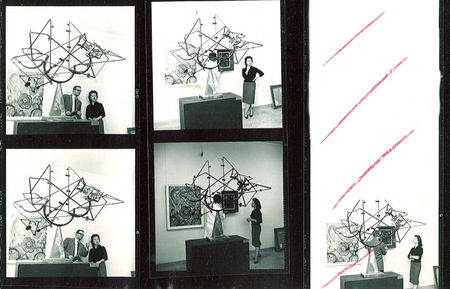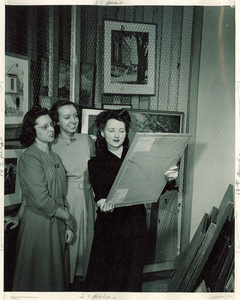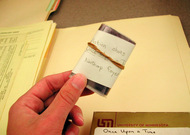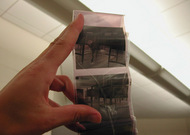The project staff of the WAM Files – Areca, Katie, Erik and myself recently presented our project process and discoveries at the Andersen Library First Fridays event held on November 4. In preparation, we began to add up all of the project results – stories uncovered, boxes processed, hours devoted, etc. I was excited to share our project – yet admittedly unprepared for the reaction we received. After we presented our project and results, we opened the floor for questions… only to receive an exclamation: “We want more!”
The audience questions also turned into personal recollections shared by those that had experienced WAM as it was known previously – as the University Art Museum and University Gallery.
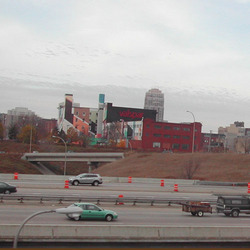 A particular recollection sparked my curiosity. Responding to a story shared of the records found of an exhibition of the work of former faculty member Peter Busa, an audience member indicated that Busa had designed the mural that covers the Valspar building in Minneapolis. Not knowing this connection, I was eager to learn more – as I see Busa’s mural from my bus window each morning on my commute to campus. In need of more details, I turned to the Digital Conservancy, and found a U of M News Service Release from October 25, 1973, (Digital Conservancy) that announces, “‘U’ Prof Designs Exterior Mural,”
A particular recollection sparked my curiosity. Responding to a story shared of the records found of an exhibition of the work of former faculty member Peter Busa, an audience member indicated that Busa had designed the mural that covers the Valspar building in Minneapolis. Not knowing this connection, I was eager to learn more – as I see Busa’s mural from my bus window each morning on my commute to campus. In need of more details, I turned to the Digital Conservancy, and found a U of M News Service Release from October 25, 1973, (Digital Conservancy) that announces, “‘U’ Prof Designs Exterior Mural,”
“Peter Busa, professor of studio arts, is the designer of ‘Demolition,’ a 60 ft. by 75 ft. abstract mural on the southwest wall of the Valspar Corporation building at 1101 S. 3rd St. in Minneapolis. Actual painting of the mural, using 60 gallons of 17 different colors of paint, was done by painting contractors. Busa signed the mural in foot-high letters.”
Other results in the search for “Peter Busa” provided a U of M News Service Release from June 6, 1975 (Digital Conservancy), the contents of which resonated with me as we reflected upon the results of the WAM Files project:
“Teaching Art Means Giving the Student Opportunity For Experience,” written by Judy Vick, begins with, “Art is like love: it cannot be taught — it must be experienced. This is the theory of the first person in the studio arts department of the University of Minnesota to be honored for distinguished teaching.”
Vick then quotes Busa, “I don’t think you can teach people to be artists—art is like love–but you can expose them to the processes of art and give them the opportunity to teach themselves.”
Busa expands further on his theory, “If a student of ours adds two and two and gets four, we suggest maybe he should go to IT (the Institute of Technology). If he gets five, maybe he has the capability to imagine.“
Throughout this project we have been introduced to the processes of the archives and have been given the opportunity to teach ourselves, and to share with others, the love of art, history, and the University.
When we first started adding folders to boxes, rows to a spreadsheet, and posts to the blog, I could have never imagined that one day we would be standing in front of a crowded room, sharing the stories that we uncovered with an audience that is just as intrigued and enthusiastic about those stories as we are.
Then again – I’ve never been very good at math…
